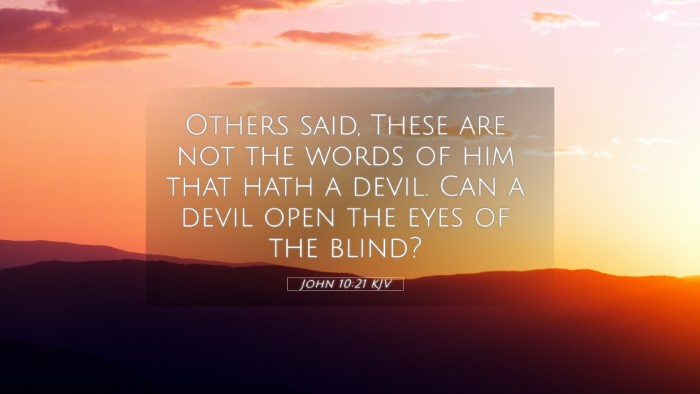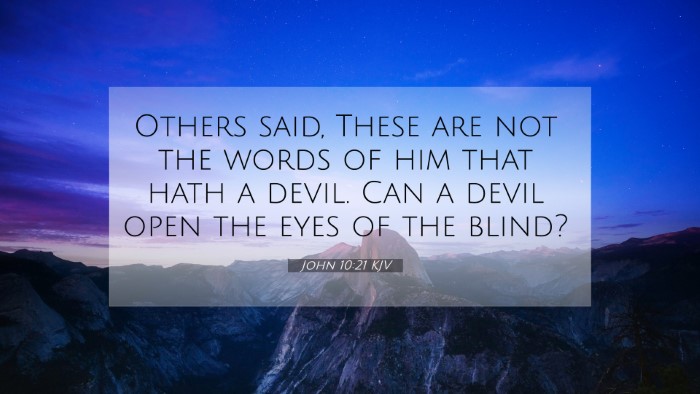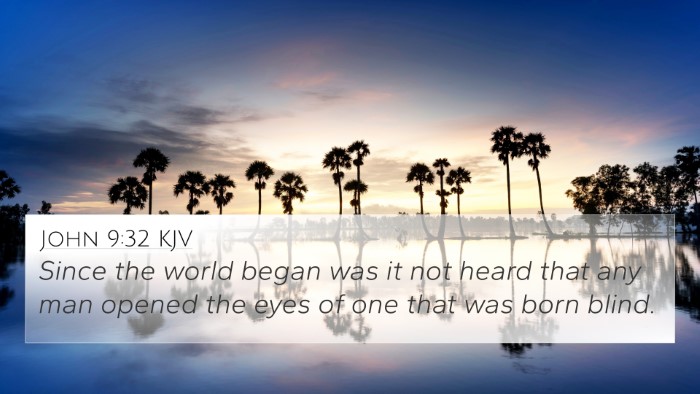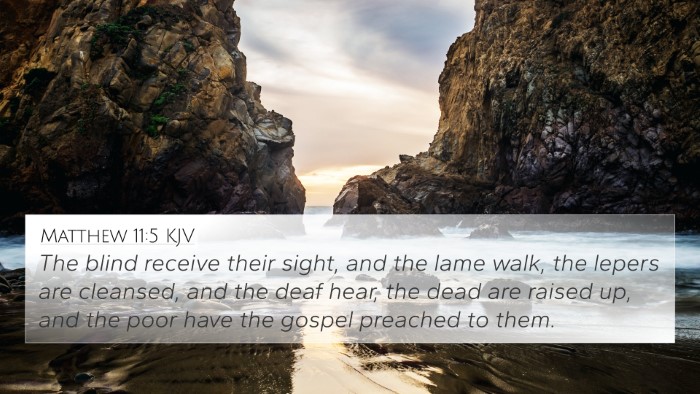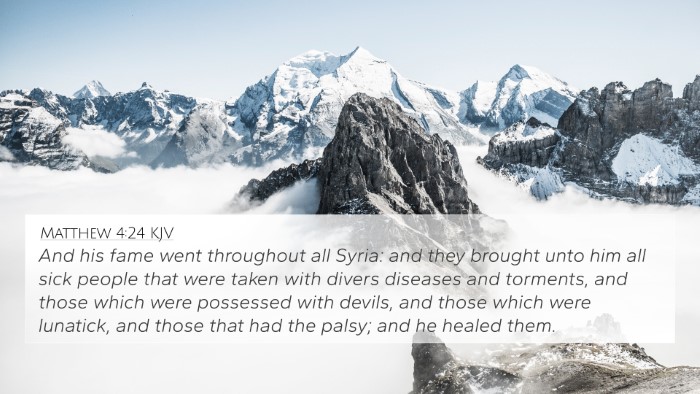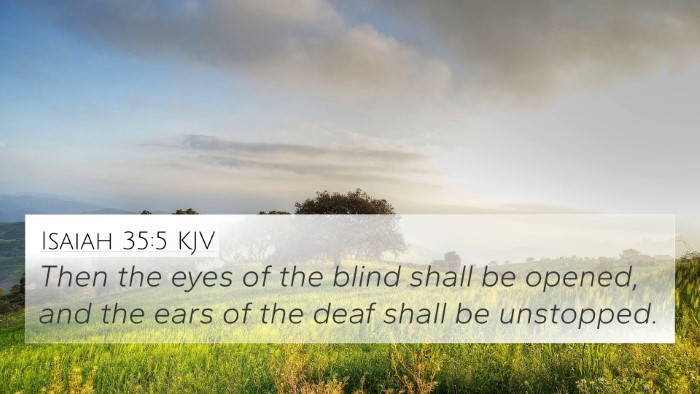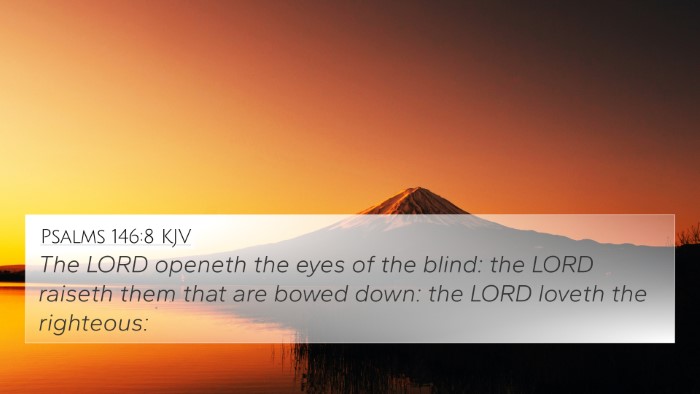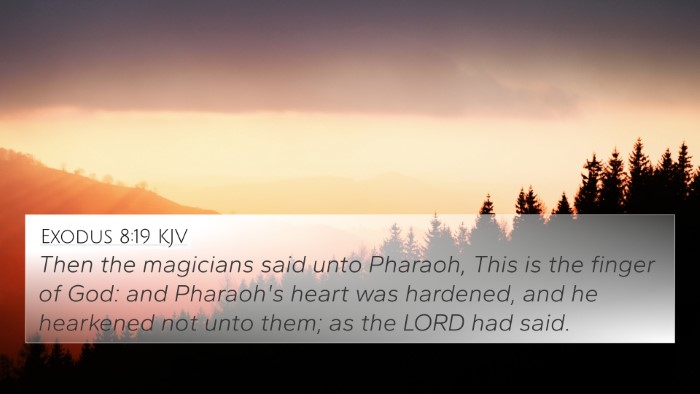Understanding John 10:21
John 10:21 states, "Others said, 'These are not the words of one who is oppressed by a demon. Can a demon open the eyes of the blind?' This verse occurs in the context of Jesus' discourse about His identity and the works He performed, particularly regarding the healing of the blind man in chapter 9. Throughout this passage, we see contrasting perceptions of Jesus and His ministry.
Meaning and Interpretation
The inquiry in this verse reflects a critical examination of Jesus' miraculous works and the validity of His claims. Here, Jesus is both defended and scrutinized by different groups—some support His divine nature while others question His authority. This encapsulates a central theme in the Gospel of John: the divide in understanding Jesus as the Messiah.
Insight from Commentaries
-
Matthew Henry remarks on the rhetorical questioning posed by the onlookers. He points out that their argument against Jesus is rooted in the miraculous healing of the blind man, which is indicative of divine intervention rather than demonic oppression.
-
Albert Barnes emphasizes the importance of recognizing the miraculous power of Jesus. He asserts that such extraordinary works could not possibly stem from a demon, thus framing Jesus unequivocally as an agent of God rather than evil.
-
Adam Clarke notes the socio-religious implications of this statement. He suggests that the public acknowledgment of Jesus' miracles stands in stark contrast to the religious leaders who reject Him. This verse highlights the ongoing struggle between belief and skepticism in the face of undeniable divine acts.
Cross-Referencing Biblical Texts
John 10:21 resonates with various interconnected verses throughout both the Old and New Testaments. Below are key Bible cross-references that complement the understanding of this verse:
- Isaiah 35:5-6: Prophetic acknowledgment of blind eyes being opened.
- John 9:7: The narrative of Jesus healing the man born blind.
- Matthew 12:28: Jesus speaks of casting out demons by the Spirit of God.
- Luke 11:14: Jesus performs an exorcism and is accused of being in league with Beelzebub.
- Acts 3:2-8: The apostles perform miracles, establishing continuity of God’s work through them.
- Mark 2:10: Affirmation of Jesus' authority on earth to forgive sins, linking His power to divine will.
- John 10:37-38: Jesus urges the skeptical to believe based on his works.
Thematic Connections
In exploring the connections between Bible verses, it becomes evident that John 10:21 functions as a reflection of larger biblical themes. Some notable themes include:
- Faith vs. Unbelief: The varied reactions to Jesus' ministry highlight the prevalent struggle of faith among His contemporaries.
- Divine Authority: The miracles performed by Jesus as manifestations of God’s power emphasize His unique authority.
- Opposition to God’s Work: The reaction of the Pharisees and others showcases a common theme of resistance against divine truth.
- Messianic Prophecy Fulfillment: The affirmation of Jesus as fulfilling Old Testament prophecies regarding the Messiah.
Tools for Bible Cross-Referencing
In studying John 10:21 and its connections through cross-referencing, several tools can aid readers:
- Bible Concordance: A list of words and phrases in the Bible, helping locate verses and their themes.
- Bible Cross-Reference Guide: A structured resource for locating similar verses and themes across scripture.
- Bible Reference Resources: Comprehensive databases providing insights into various biblical topics and connections.
- Cross-Reference Bible Study Methods: Techniques and strategies for deeper exploration of theological themes across texts.
Application for Study
Understanding John 10:21 alongside its connected verses enhances the reader's comprehension of the narrative and teachings of Jesus. By engaging in comparative Bible verse analysis, one can gain a broad perspective on how Jesus' identity and works were perceived and how they relate to foundational biblical themes.
In conclusion, John 10:21 provides rich insight into the ministry of Jesus and the various reactions to His miracles. By employing tools for cross-referencing and recognizing inter-Biblical dialogues, readers can uncover the depth of Scripture’s message.

